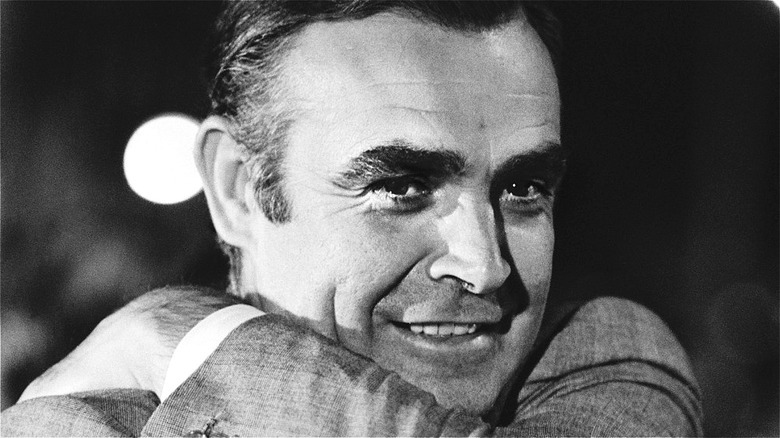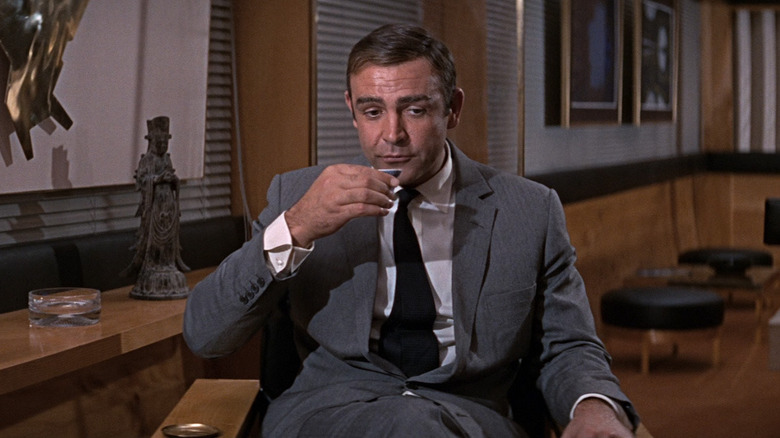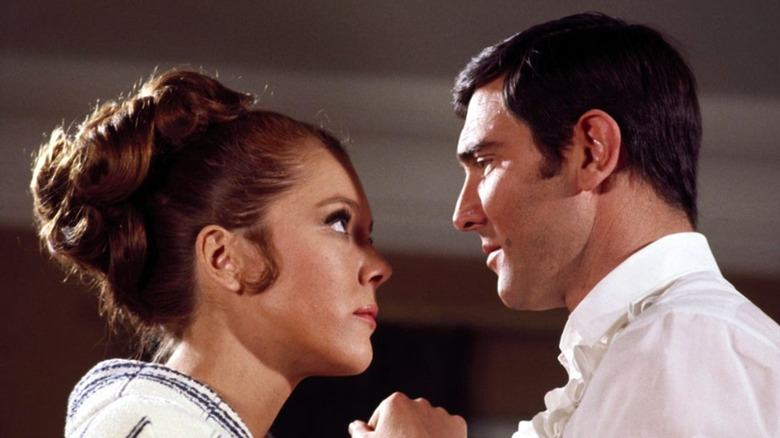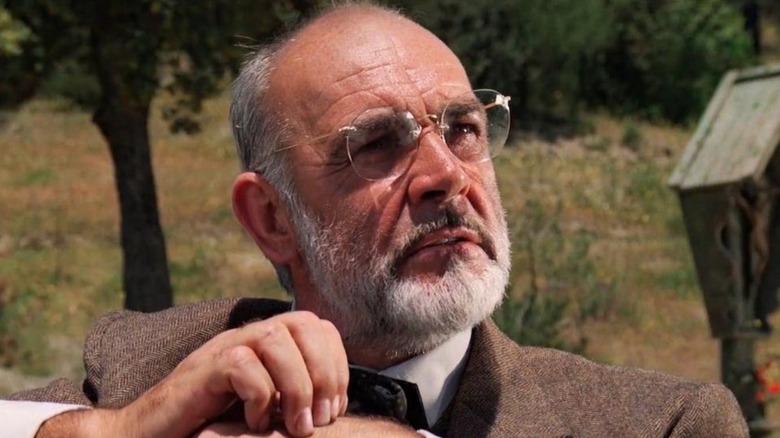The Real Reason Sean Connery Wasn't On Her Majesty's Secret Service's James Bond
Daniel Craig earned his props by bringing the iconic superspy James Bond into step with the modern age, presenting a grittier, more grounded, and, at times, downright vulnerable version of the character. Despite his best efforts, though, there's a portion of the Bond fandom that would still pick the first actor to bring Ian Fleming's creation to the big screen — the late Sean Connery — as the one who did it best. And who can blame them, really?
In a breakdown of Bond films for The Oscar's A.frame, Connery's third outing as 007, 1964's "Goldfinger," was described as "the quintessential Bond film." Perhaps more than any other, it is that aspect — the fact that Connery and the Bond films he starred in established a franchise formula that was still palpable in Craig's "No Time to Die" swan song — which has allowed the Connery Bond to reach such a lofty perch.
Still, a closer examination of Connery's Bond filmography reveals a peculiar anomaly. After thrilling audiences in five stints as Agent 007, culminating with his turn in the bombastic "You Only Live Twice," Connery was replaced by George Lazenby for 1969's "On Her Majesty's Secret Service" before returning in "Diamonds Are Forever" two years later. Lazenby's single-film portrayal drew mixed reviews and left moviegoers to wonder why Connery was replaced at all. Here's the dirt on what went down between Connery and Bond's producers at the time ...
Money was an issue for Connery
Without Sean Connery, the Bond series may have never become the cinematic juggernaut that it is today, and that is especially true of its fledgling days in the 1960s. However, after doing a lot of the same thing over the course of five films and several years, the actor grew bored with slinging his Walther PPK and ordering vodka martinis "shaken not stirred," as relayed by China Daily. If producers Albert R. "Cubby" Broccoli and Harry Saltzman wanted him to continue on as Bond, they were going to have to pony up the big bucks.
Connery had been vocal about his displeasure over the paycheck he received for "You Only Live Twice," which was reported to be $750,000 plus 25% of merchandising profits. And while that's a pretty (Money)penny even by today's standards, it's hard to blame him for feeling that way. According to The Numbers, the movie raked in almost $112 million at the international box office, which equates to over $900 million in 2021 money. So Connery was probably justified when he sought a million-dollar salary plus a percentage of the gross for his next appearance.
Broccoli and Saltzman balked at Connery's demands, however, and the role of Bond ultimately shifted to Lazenby, an Australian import and car salesman turned model/commercial actor whom Broccoli had met by chance while paying a visit to his barber, per 007.com.
OHMSS & Lazenby have gained a cult following
Even before his chance encounter with Broccoli, George Lazenby had designs on becoming the next Bond. In preparation for a possible audition, he had already purchased a suit that was made for (but never used by) Connery on "You Only Live Twice." And the only reason he had gone to that particular barbershop was to get a Connery-style trim from the Scotsman's personal scissor man. Despite his iron will to land the role, though, not to mention the strong impression he had made on Broccoli — as well as "On Her Majesty's Secret Service" director Peter Hunt — not everyone was able to take the change in stride.
In a 1969 review for The New York Times, A. H. Weiler wrote that "Mr. Lazenby, if not a spurious Bond, is merely a casual, pleasant, satisfactory replacement." He further noted that Lazenby "plays a decidedly second fiddle to an overabundance of continuous action." And that was one of the friendlier reviews of Lazenby's performance.
Over the many years that have passed since "OHMSS" first hit theaters, though, the film and Lazenby's portrayal of Bond has garnered significant recognition for being worthy entries into the Bond lore. For his part, filmmaker Steven Soderbergh wrote that "shot to shot, [OHMSS] is beautiful in a way none of the other Bond films are." Where Connery's replacement was concerned, he added, "I actually like him — a lot — and think he could have made a terrific Bond had he continued."
Things worked out pretty well for Sir Sean in the end
While Sean Connery missed the boat on playing Bond in a film that continues to impact the franchise today — its influence is apparent in "Spectre" and "No Time to Die," from story beats right down to specific orchestral cues and the latter's end-credits song — his "firing" from the Bond role didn't slow him down any. Broccoli and co. eventually caved on his salary demands and awarded him a cool $1.25 million to return as Bond in "Diamonds Are Forever" in 1971. Then, in 1983, he made another comeback in the "unofficial" Bond movie, "Never Say Never Again."
In addition to his later Bond work, Connery continued to entertain the movie-going masses for decades with roles in "Indiana Jones and the Last Crusade," "Highlander," "The Rock," "The Hunt for the Red October," and "The Untouchables." He netted an Academy Award for Best Supporting Actor for his work in the latter film, which saw him portray fictional Irish cop Jimmy Malone, a character based on real-life FBI agent Martin J. "Marty" LaHart.
Connery passed away in October 2020 at the age of 90. In the aftermath of his death, current Bond stewards Barbara Broccoli and Michael G. Wilson said, via the BBC, that Connery had "revolutionized the world with his gritty and witty portrayal of the sexy and charismatic secret agent. He is undoubtedly largely responsible for the success of the film series and we shall be forever grateful to him."



